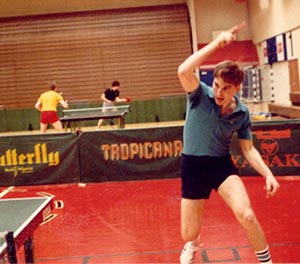Weekend Coaching and Coaching Correspondence
I was going to write about my weekend coaching yesterday, but then that thing about USA bidding for the Worlds came up, and, well, it was a tough call - what's more interesting, the World Championships or reading about Larry's coaching sessions? Of course you want to hear more about my coaching sessions, but I decided to save the best for later and write about the World’s first.
As usual, I had three group sessions on Sunday. (I run two of them, help with the other.) In the Beginning Junior Class, Week 8, we introduced them to looping. Not world-class looping, not yet, but just easy spinning of a backspin ball on the forehand side. (We'll do backhand next Sunday.) About half the class was ready for this, while for others (mostly younger ones) we did more work on forehand, backhand, pushing, and footwork. We had 17 in the class, with four coaches.
In the Talent Junior Program, I fed a lot of multiball, much of it backspin so they too could work on looping, but now it was much more advanced players. I also spent time working with some of them on pushing. Two of the youngest were quite proud when they pushed 66 times in a row! (But I reminded them that at the 1936 Worlds, in the first point of their match two players pushed for two hours 18 minutes.) We had I think 24 in the class, with eight coaches and several practice partners/multiball feeders.
In the Adult Training Session, for the more advanced players we did the usual stroking and footwork drills, then some random drills, and finally serve and attack. For two who were more beginners, we did almost all stroking drills, including pushing. For the last 15 minutes I fed multiball to them so they could work on looping. (I did a lot of that on Sunday.)


 Photo by Donna Sakai
Photo by Donna Sakai


